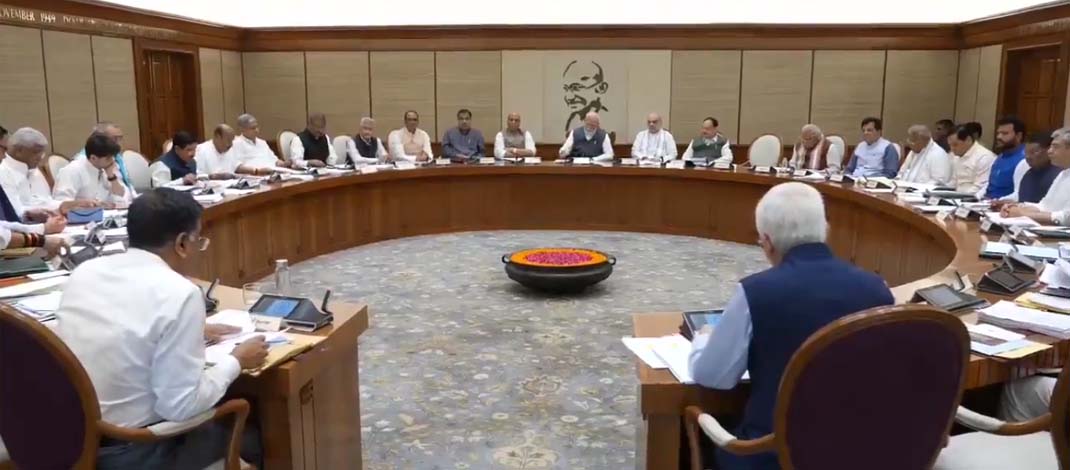- Courses
- GS Full Course 1 Year
- GS Full Course 2 Year
- GS Full Course 3 Year
- GS Full Course Till Selection
- Online Program
- GS Recorded Course
- NCERT (Recorded 500+ Hours)
- Polity Recorded Course
- Geography Recorded Course
- Economy Recorded Course
- AMAC Recorded Course
- Modern India, Post Independence & World History
- Environment Recoded Course
- Governance Recoded Course
- Science & Tech. Recoded Course
- International Relations and Internal Security Recorded Course
- Disaster Management Module Course
- Ethics Recoded Course
- Essay Recoded Course
- Current Affairs Recoded Course
- CSAT
- 5 LAYERED ARJUNA Mentorship
- Public Administration Optional
- ABOUT US
- OUR TOPPERS
- TEST SERIES
- FREE STUDY MATERIAL
- VIDEOS
- CONTACT US
CUET-UG 2025 Changes and UGC Announcements
CUET-UG 2025 Changes and UGC Announcements
11-12-2024

- In December 2024, University Grants Commission announced that Common University Entrance Test (CUET-UG) will be conducted entirely in computer-based test (CBT) mode in the starting of 2025, moving away from the hybrid mode used in previous years.
- University Grants Commission is a statutory body under Department of Higher Education, Ministry of Education, Government of India.
- It was set up in accordance to the UGC Act 1956 and is charged with coordination, determination and maintenance of standards of higher education in India
- The shift aims to improve the examination process, making it more efficient and secure.
- In a significant change, students will be allowed to select subjects for the CUET-UG that they did not study in Class 12.
- This move aims to break traditional disciplinary boundaries, allowing students to explore different subjects and streamlines access to higher education across various disciplines.
-
Reduction in Number of Subjects:
- The number of subjects available in the CUET-UG will be reduced from 63 to 37.
- The subjects dropped will no longer be offered as part of the entrance test, including Entrepreneurship, Teaching Aptitude, Fashion Studies, Tourism, Legal Studies, and Engineering Graphics.
-
Admissions Based on General Aptitude Test (GAT):
- For the dropped subjects, admissions will be determined by the General Aptitude Test (GAT) scores.
- This streamlines the entrance process and focuses on a common set of aptitude-based assessments for all candidates.
-
Structure and Format Changes:
- The duration of each test paper has been standardized at 60 minutes across all subjects to ensure consistency.
- The number of questions will also be the same across all subjects, eliminating variability in test formats.
- The concept of optional questions has been removed. All questions in the CUET-UG will be compulsory, which aims to provide a more comprehensive and uniform assessment of students’ knowledge.
-
Language Tests:
- The number of languages offered for CUET-UG has been reduced to 13. The languages available for the test will now include:
- Assamese, Bengali, English, Gujarati, Hindi, Kannada, Malayalam, Marathi, Punjabi, Odia, Tamil, Telugu, and Urdu.
- Previously, there were tests available for 33 languages.
- The number of languages offered for CUET-UG has been reduced to 13. The languages available for the test will now include:
-
Focus on Quality and Efficiency:
- The move to CBT is seen as a way to reduce human error in the evaluation process, providing more accurate and quicker results.
- CBT also enhances security and ensures the integrity of the examination process by minimizing the possibility of cheating or errors in manual evaluation.
-
Feedback from Expert Committee:
- The changes to the CUET-UG format are based on recommendations from an expert panel.
- The panel reviewed several aspects of the test, such as exam structure, number of papers, syllabus alignment, and operational logistics.
- These recommendations were discussed and approved by the University Grants Commission (UGC) on 13th November 2024.
-
Past Challenges and Improvements:
- The UGC acknowledged issues faced in previous years, such as technical glitches and delayed results.
- 2022: First year of CUET-UG, with technical issues delaying results until September.
- 2024: The exam was held in both online and pen-and-paper modes, but the results were delayed due to logistical problems.
- These challenges have prompted UGC to make these significant changes for 2025 to provide a smoother experience for students and reduce delays.
- The UGC acknowledged issues faced in previous years, such as technical glitches and delayed results.
-
CUET-UG as a Gateway for UG Admissions:
- CUET-UG, administered by the National Testing Agency (NTA), serves as a single entrance exam for UG admissions across 46 central universities in India, including prestigious institutions like Delhi University, Banaras Hindu University (BHU), and Allahabad University.
- The new changes aim to make the examination process more student-friendly and efficient, ensuring better access to higher education for a diverse student population.
Strategic Context and Importance:
- The ability for students to opt for subjects they have not studied in Class 12 could open up new opportunities, particularly for students interested in interdisciplinary fields or exploring new areas of study.
- This move supports the National Education Policy (NEP) 2020’s goal of promoting flexible, multidisciplinary learning in higher education.
- With a reduction in the number of subjects and the introduction of compulsory questions across all papers, the standardization of the exam will make the process more equitable and fair for all candidates.
- This also simplifies the evaluation process, allowing for quicker result processing and reducing logistical challenges.
- The adoption of CBT mode addresses issues faced in previous years, such as manual errors and technical glitches, ensuring that the exam is both secure and efficient.
- By eliminating optional questions, the exam now provides a level playing field where every candidate is tested on the same set of knowledge, making the process more transparent.
- The changes will likely benefit students from diverse backgrounds, as the flexibility to choose subjects not taken in Class 12 allows for greater accessibility to a wider range of programs and disciplines.
- However, the reduction in the number of subjects could limit the scope for students who were hoping to appear for exams in certain specialized subjects, such as Fashion Studies or Tourism.
- While these changes are designed to address some of the issues in the previous years, it remains to be seen how well they will be implemented and whether they will address the technical challenges faced by the exam in earlier years.
- The UGC and NTA may continue to monitor the effectiveness of these changes and introduce further reforms based on feedback and exam performance.
Conclusion:
The CUET-UG 2025 reforms are designed to make the entrance exam process more efficient, secure, and accessible. By transitioning fully to a computer-based format, reducing the number of subjects, and allowing students greater flexibility in subject choices, these changes aim to improve the overall experience for students. The focus on standardization, compulsory questions, and quicker result processing ensures that the examination system is better aligned with the needs of modern education while addressing past issues like logistical delays and technical glitches.



